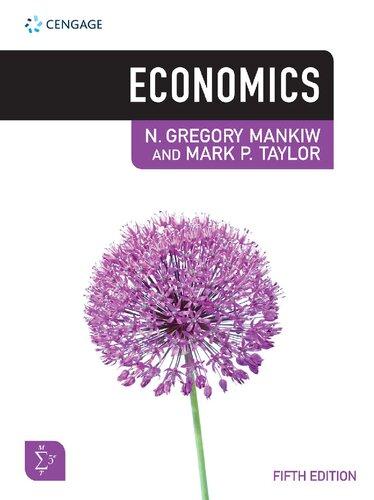The market for alcohol is oligopolistic. It is dominated by four large firms and in recent years
Question:
The market for alcohol is oligopolistic. It is dominated by four large firms and in recent years has become more concentrated as rival firms merge. In 2008, InBev and Anheuser-
Busch merged to form A-B InBev and in 2015, A-B InBev made several offers to take over SABMiller culminating in an almost $70 billion (€61.4bn) agreement in October 2015. SABMiller itself had grown as a result of merger; in 2008 Miller and Coors merged. Ambarish Chandra of the University of Toronto and Matthew Weinberg of Drexel University looked at the relationship between market structure and advertising, and their research suggested that greater market concentration actually leads to increased advertising spending per capita.
Their findings were counter to one of the early theories of advertising, which predicted that advertising was primarily a means of competition, and as markets became more concentrated, advertising spending would fall. Chandra and Weinberg’s findings were more similar to theories of advertising put forward by Lester G. Telser of the University of Chicago in 1964, which suggested that advertising can help a firm with market power to increase that power by creating barriers to entry, and hence reducing the potential of losing market share. Other theories, such as Dorfman and Steiner in 1954, hypothesized that when markets become more concentrated, there are cost savings for firms which free up resources for more advertising. Chandra and Weinberg found little evidence to support this idea.
Instead, they argue that lower distribution costs experienced by Miller and Coors went to finance price reductions instead of increased advertising.
Chandra and Weinberg sought to explain the increased advertising by Miller and Coors in terms of spillover effects. If one brewer advertises its brands heavily, then this not only raises awareness of the brands to consumers but also raises awareness of other brands from other brewers. As a market becomes more concentrated, firms recognize the spillover benefits of advertising as a positive externality affecting awareness and demand for its wider range of brands secured through merger and takeover. Firms being aware of these spillover effects make the strategic decision to increase spending on advertising, not simply because they are seeking to inform or attract customers and thus provide a benefit to the customer but also because there are wider benefits to the firm itself.
The Austrian school looks at advertising not from the lens of whether it is wasteful and more or less likely in competitive or concentrated market structures, but as a factor of production which entrepreneurs will purchase to enable them to sell products at prices higher than costs of production. Economists of the Austrian school such as Mises and Menger argue that looking at a model of the firm based on perfect competition as a starting point and introducing increasing degrees of imperfection to look at how firm behaviour changes, is largely meaningless. Perfect knowledge, they argue, does not exist. In the model of perfect competition, of course, firms are price-takers and goods are homogenous, so there is no need to advertise. Economists in the Austrian school argue that the cost of advertising is no different from any other cost of production. It is, as a result, no more or no less the cause of higher prices nor a waste of resources than spending on any other factor of production. If a firm spends money on advertising and it does not have the ultimate effect of increasing sales and revenues, then the only resources that have been wasted is the firm’s itself; these are not society’s resources.
Critical Thinking Questions
1 Explain the logic that the more competitive a market the higher the likely advertising spend.
2 Are firms in an oligopoly more or less likely to spend on advertising if the products they are selling are homogenous?
3 When firms in an oligopolistic market structure merge and the resulting entity has an increased number of brands, why might it be strategically beneficial for the new entity to expand advertising?
4 To what extent do you agree with the view that firms in an oligopoly can use advertising as a barrier to entry?
Justify your argument.
5 Consider the view of the Austrian school that advertising is not wasteful and that the cost of advertising is no different from any other cost of production.
Step by Step Answer:






